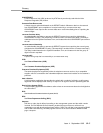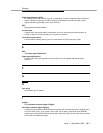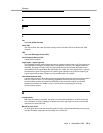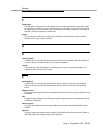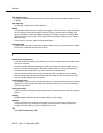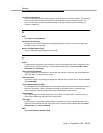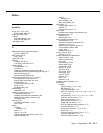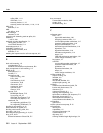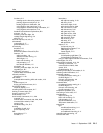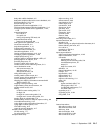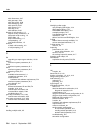
Glossary
Issue 4 September 1995 GL-13
two switch configuration
A LAI call setup that consists of two switches: sending switch and receiving switch. The vector(s)
in the sending switch determine whether the call should be sent to the receiving switch. The
vectors in the receiving switch determine whether to accept or deny the call according to a
number of conditions.
U
UCD
See uniform call distribution.
unconditional branching
The type of vector control flow that is automatically passed from the current vector step to the
specified vector or vector step.
uniform call distribution (UCD)
Uses the Most Idle Agent algorithm to route calls.
V
vector
A programmed routing table for processing incoming calls that provide various responses to the
caller before the call is answered or receives other treatment. See also call vectoring, vector
command, and vector step.
vector-controlled split/skill
A split or skill that is accessed from a vector step that results in queuing to the split/sill while the
call is still under vector-processing control.
vector command
A command used in call vectoring to specify the treatment that a call will receive. See also vector
and
vector step.
Vector Directory Number (VDN)
An extension number that terminates to a vector. Calls to the VDN are processed by the vector to
which the VDN points. When used with call vectoring, the dialed number received by the
communications system to provide DNIS is the VDN assigned for that service.
vector number
The vector-assigned value that determines which vector is activated when a call comes into a
VDN. Several VDNs may send calls to the same vector.
vector step
A single step of a programmed routing table for processing incoming calls that provide various
responses to the caller before the call is answered or receives other treatment. See also vector,
call vectoring, and vector command.
VDN
See Vector Directory Number (VDN).



